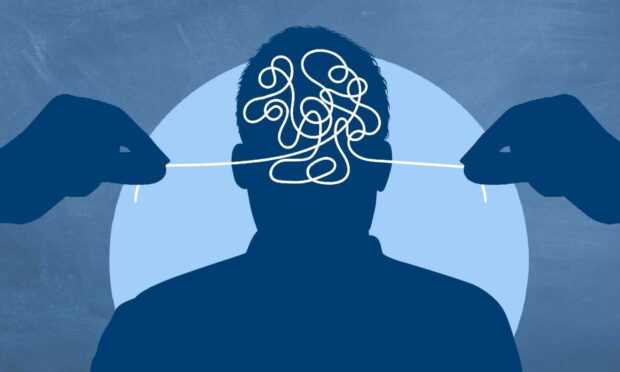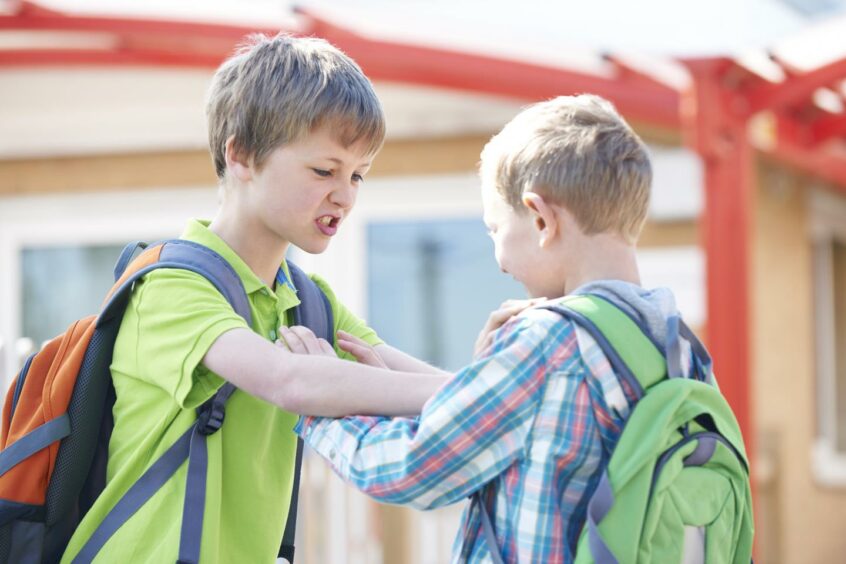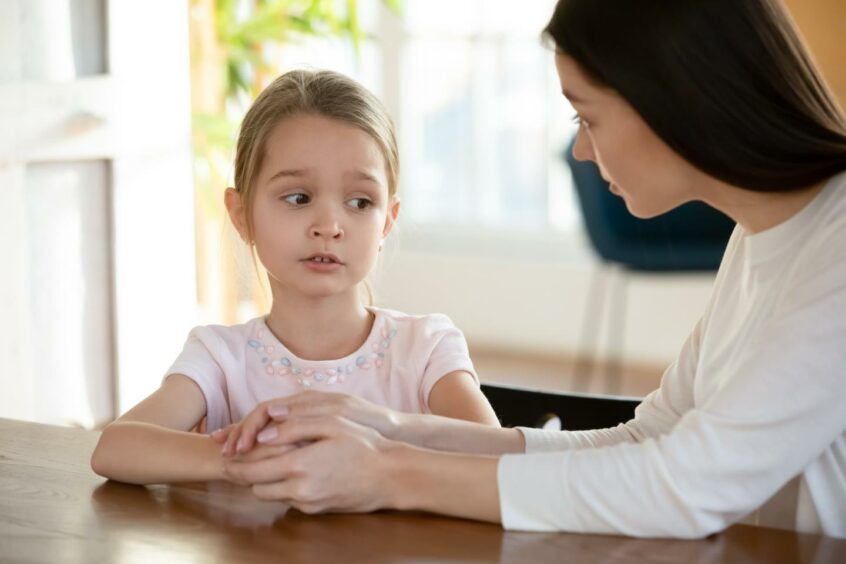What would you do if you discovered your child was bullying others?
Your first response may be anger – but you can learn how to help them stop the behaviour.
Experts often refer to children displaying ‘bullying behaviour’ rather than simply labelling a child as a ‘bully’.
This is because these children are not always malicious people who are out to hurt others.
In fact they could be suffering from bullying themselves or experiencing trauma, so referring to their behaviour allows them to see they can change.
Signs your child is a bully
There are key signs to look for when you think your child has been bullying others.
According to the Anti-Bullying Alliance, evidence suggest children who display bullying behaviour are likely to have poor wellbeing themselves.
They may crave popularity and find challenges to their self-esteem difficult to handle.
They also are likely to have lower empathy.
The term ‘bully-victim’ is used to describe young people who bully and are bullied.
How can you help them?
Bullying UK, which is part of charity Family Matters, has shared its best advice for spotting the signs of bullying and what to should do if you get the dreaded phone call from school that your child has been targeting another pupil.
One of the key pieces of advice is to try to understand what caused them to bully. This will help you explain to your child why their behaviour was wrong.
1. Get all the facts
Parents may be devastated and shocked by the revelation that their child has been bullying another child.
Instead of getting angry and shouting, Bullying UK urges parents and carers to listen calmly to what the school has to say about the incident.
It is important to ask for as much information as you can so that you have all of the details.
Familiarise yourself with the school’s anti-bullying policy and ask questions about how the school plans to deal with the bullying.
This will help you understand the severity of the incident and decide how best to discipline your child at home.
2. Talk to your child
To start with you should remain as calm as possible and find out your child’s side of the story.
It is important not to start the discussion angry as this could result in the child shutting off and refusing to talk about what happened.
A good way to make the child reflect could be to get them to imagine themselves in the shoes of the person who has been bullied – how would they feel?
This will help them understand the impact their behaviour can have.
It is also important to prepare your child for the possible consequences of bullying.
3. Try to find out what caused the behaviour
There are many reasons why a child could be displaying bullying behaviour towards another child.
Often they will be experiencing a difficulty of their own that has caused them to act in a negative way.
Bullying UK urges parents to consider any recent changes to family and home life, for example a bereavement or a conflict.
A lot of children who bully have also been bullied themselves, the charity says, and this could then cause them to act out as a way of ’fitting in’.
Finding the cause of the bullying behaviour can help resolve the issues and it can also help the child overcome the trauma they are experiencing.
There are also many services, such as counselling or support, which can help children who are struggling.
4. Encourage children to ‘be kind’
While your child may already think they know all about empathy and kindness, their behaviour shows it is a great opportunity to remind them of the importance of being kind to other people.
The Bullying UK advice states: “Ask them to treat others the way they would like to be treated and most importantly, ensure that the family as a whole take this approach.”
Anyone who witnesses bullying should report the incidents to a relevant authority, such as teachers, police or parents.
Scotland’s anti-bullying service RespectMe offers guidance for young people who are experiencing bullying and their parents and teachers.
If you feel like the bullying you witnessed at school or online was a hate crime, you can also report it to Police Scotland via 101.
Childline support young people with any worries they may experience, including mental health and bullying.
They can be contacted confidentially on 0800 11 11 or use their free 1-2-1 counselling service.
Read more from our bullying series
-
- ‘Mummy I just want to die’: Devastating words of Fife girl, 7, after years of bullying
- Bullying in schools: Our survey reveals 9 in 10 parents do not think schools can effectively tackle it
- Bullying advice: How to help children who are being bullied
- Types of bullying: What is classed as physical, sexual and prejudicial bullying?
- Devastating effects of bullying on children in the short and long term
- OPINION: I attempted suicide after years of bullying – schools need to take it seriously
- Autistic Angus teen terrified to go to school as pupil threatens to ‘kill him
- How to report bullying to schools and the police
- Mum says alleged assault of her 5-year-old son shows bullying happens at any age
- Race, religion and sexual orientation among main reasons for school bullying in Tayside and Fife
- Relentless bullying makes Autistic Angus teen pull her own hair out and say she wants to die
- Anti-bullying policies: Schools take restorative action to resolve bullying
- Education Secretary: School exclusions must be ‘last resort’ for dealing with bullying
- Traumatised Perthshire teen ‘hid in classrooms’ while bullies who pushed her down stairs faced ‘minimal punishment’












